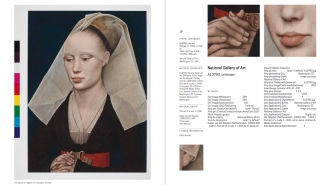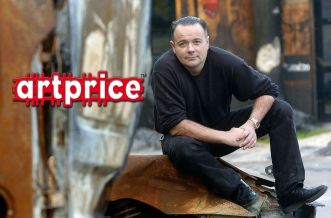Global sales of art works amount to roughly $45 billion a year, but in 2016 only $3.75 billion of that — less than 10 percent of the total — was transacted online, according to the Hiscox Online Art Report, making the art and collectibles trade a laggard in the world of e-commerce.
A big part of the reason for the lack of a more robust online marketplace is the high potential for fraud — already a $6 billion a year problem in the art world — when buying artworks sight-unseen except in digital form. Copies and knockoffs can be passed off as originals, “limited” editions can overstep their limits, certificates of authenticity can forged.

Verisart CEO Robert Norton
Several startups have have launched in recent years to tackle that problem, including Verisart, ascribe, and Tagsmart, by providing artists the means to assert their authorship and issue time-stamped, digitally signed certificates of authenticity (COAs) by registering the information on a blockchain. But online sales have yet to scale using that artist-by-artist, piece-meal approach.
Now, Burbank, Calif.-based Verisart is looking to go the wholesale route through a partner certification program and API for online sellers and galleries. Last week, it announced its first such partnership, with online gallery Avant Arte.
Under the deal, Avant Arte will apply Verisart’s certification standards across all its represented artists and sales of limited edition artworks. Each certificate will be optimized for both physical and digital use with a unique QR code, blockchain timestamp and web address.
Speaking at the RightsTech Summit in New York last week, Verisart CEO Robert Norton said, “As online retailers and galleries look to improve certification standards, we’re seeing increasing demand for blockchain enabled certificates and we’re delighted to work with Avant Arte as our first limited edition print partner.”
Added Avant Arte ATO Nico Veenman, “By partnering with Verisart, we’re applying two factor validation of ownership by combining a physical ownership certificate and a digital certificate on the blockchain including immutable and authorized information about the artwork edition.”
Avant Arte is the first company to use the Verisart’s partner API allowing bulk transfer of data and certificate customization.
(Cover image: Wikimedia Commons)





 Venture capitalist and former music startup founder David Pakman has compiled some grim statistics on the survival rate of VC-backed music services. “Since 1997, according to
Venture capitalist and former music startup founder David Pakman has compiled some grim statistics on the survival rate of VC-backed music services. “Since 1997, according to 


